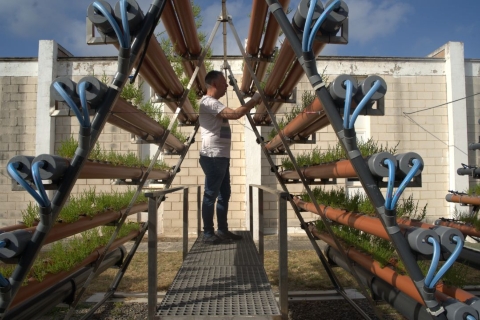
A team of scientists from the Natural History Museum (UK), the Scottish Association for Marine Science, and the University of Malaya, led by Professor Juliet Brodie, has published the report The State of the World’s Seaweeds 2025. This document provides a global overview of the current state of marine seaweeds and seeks to establish itself as a key tool in advancing the “Seaweed Breakthrough” — an initiative promoted under the UN’s Climate Breakthrough Agenda towards 2030.
Seaweeds-red, green and brown- make up the largest marine plant ecosystem on the planet, surpassing seagrasses, mangroves, saltmarshes and coral reefs in extent. They account for 74% of total marine vegetation, and yet remain “barely mentioned in conservation and environmental management policies”.
Their importance extends far beyond their physical presence: seaweeds support million of livelihoods, are fundamental to global food security, and play a vital role in climate regulation and nutrient recycling. “They contribute to all the Sustainable Development Goals,” the report affirms-from eradicating poverty to climate action.
The report notes that over 12,000 species of seaweed have been described to date although the real number is likely more than twice this figure. Many remain unstudied due to a shortage of specialist taxonomist and limited exploration, particularly in the southern hemisphere.
In terms of habitats, rhodolith beds (formed by calcified red algae) top the list by estimated area, covering 4.12 million km2-even more than kelp forest, which span 1.47 million km2.
Multiple threats, insufficient protection
“Ocean warming has been identified as one of the main drivers of change in the distribution and survival of seaweeds,” the report warms. Losses in kelp forest are double those seen in coral reefs and four times greater than those in tropical forest. These impacts are compounded by overexploitation, pollution, coastal development, invasive species and disease.
The conservation outlook is bleak: few marine protected areas explicitly include seaweeds, and the IUCN Red List has scarcely assessed their status. This neglect is partly due to a lack of data on seaweed biodiversity and real-world distribution.
Restoration: high ambition, limited results
While the growing importance of restoring seaweed habitats is acknowledged, efforts have been focused almost exclusively on kelp forest. Techniques range from planting “green gravel” to managing herbivore populations, yet progress remains slow and costly. “No efforts have been made to restore extremely slow-growing habitats, such as cold-water red algae beds,” the report laments.
The report concludes with a call to action to consolidate the “Seaweed Breakthrough”: a framework with ambitious 2030 targets to halt habitat loss, protect existing areas, restore damage ones, and secure sustainable investments.
In a global context where aquaculture increasingly seeks sustainable solutions, this report not only warns of the vulnerability of seaweed ecosystems, but also positions them as strategic allies in tackling climate change, ensuring food security and driving marine regeneration.
“Investing in the survival and thriving of seaweed habitats is essential to confront the climate crisis, biodiversity loss and pollution.”
For professionals in the aquaculture and scientific sectors, this document serves as an essential reference guide-urging immediate action, scientific rigour and global cooperation.



